Boxer Dog Degenerative Myelopathy
Overview
Canine degenerative myelopathy is a progressive disease of the spinal cord. This has been identified in 40+ breeds; however, the top 3 breeds most commonly diagnosed with DM are the Boxer, German Shepherd, and Pembroke Welsh Corgi.
In this section, we'll take a closer look at degenerative myelopathy, and then meet an exceptional Boxer diagnosed with this disease.
About Degenerative Myelopathy
What this is:
Canine degenerative myelopathy (DM) is a progressive disease, meaning that the ailment worsens and/or spreads over time. Unfortunately, this disease is also incurable. There are medications to help a dog be more comfortable, and to treat secondary conditions; however, as of now there is no treatment to reverse or stop this.
The 'myelo' in the name refers to myelin, a part of the spinal cord in which certain neurons are encased in a sheath. It is thought that a dog's immune system attacks this part of the spinal cord, resulting in damaged and then broken communication between nerves in the lower body and the brain.
Onset:
Age of onset is typically between 7 and 14 years old.
Symptoms:
This often begins with muscle weakness and lack of coordination of the hind legs. The dog may stumble or have an awkward gait. It's common for dogs to 'knuckle over' or drag their rear paws.
As this progresses, the rear legs begin to buckle until the point of paralysis and complete loss of use. The pelvic area is also affected, causing incontinence.
Unfortunately, the next phase affects the front legs. This generally occurs 6 to 12 months after the hind legs are affected. Eventually, respiratory muscles may be affected as well.
It should be noted that the actual disease is considered pain-free. Perhaps the one saving grace.
The full list of symptoms, in order, is as follows:
- Dragging of rear paws
- Knuckling-over on rear toes
- Development of sores on top of rear paws
- Abnormal wear of the rear toenails
- Weakness in the hind legs
- Difficulty walking, rising, and jumping
- Ataxia (problems balancing, uncontrolled movements)
- Muscle atrophy
- Incontinence
- Partial and then complete paralysis of the hind legs
- Followed by partial and then complete paralysis of the front legs
- This can progress to trouble chewing and swallowing, and difficulty breathing
Diagnosis:
DM is normally diagnosed by ruling out other conditions with similar symptoms, and via visual cues based on exact mobility issues.
There is also a relatively new DNA test that looks for a mutation of the SOD1 gene. Dogs with one abnormal gene are thought to be carriers (can pass this on, but do not develop the disease) and those with two abnormal genes are at high risk.
This can confirm the diagnosis.
Treatment:
There is no cure, treatment, or medication to directly treat DM. However, dogs may be prescribed certain supplements that can aid in a variety of ways including joint health. Anti-inflammations may be given, as well as medication to help control incontinence issues.
If a dog's body is compensating for the loss of mobility, this can cause radiating discomfort, and there may be sores due to inability to move positioning when resting or sleeping. Therefore, if needed, pain medication can be given as well.
Prognosis:
Survival rate can be as short as 6 months or as long as 3+ years.
Next, we'll meet a pretty incredible Boxer dog that has been diagnosed with DM, and thanks to his loving family, is doing remarkably well.
Meet Roscoe Noble Brown...
Roscoe is a 13 year old Boxer dog (DOB April 4, 2004). He's owned by Nicole and Billy Squier of Bridgehampton, New York.
If the name sounds familiar, this is the
Billy Squier, the famous rock musician, who we can all thank for Lonely is the Night, Everybody Wants You, In The Dark, and My Kinda Lover, among other great hits.
The ABI team are huge fans, and we're sure that you are too... But enough gushing from us, the focus is on Nicole and Billy's inspirational Boxer and his brave journey with DM.
Roscoe is actually the 2nd Boxer dog that Nicole and Billy had that unfortunately was diagnosed with degenerative myelopathy. Their first Boxer, Simon, who is now passed, and Roscoe were both diagnosed at the age of 10.
We have a Q&A with Nicole to learn more about Roscoe and how they are all coping with this challenging disease.
Q&A
Q:
Hi, can you please give us a summary of 'Roscoe, the Beginning'... We'd like to know if you've had Roscoe since he was a puppy? Also, were there any other pets in the house at the time?
How were those first few months? And can you give us a brief overview of his personality as a pup?
A: Roscoe has been 'our' only pet.
The first fond moment I cherish is when we finally decided it was time to give another Boxer a loving home (Billy had another Boxer - named Simon - when we first met). Roscoe - age 12 weeks - walked through the door of the kennel's waiting room and straight towards Billy, climbing up on his knees to give him big kisses.
It was a very sweet bonding moment as if Roscoe was saying, "Please take me home with you!"... and 13 years later, here we are!
Coming home with us on his first day was a bit of an adventure for us all.
Roscoe's tummy wasn't up for a brisk ride in a little German sports car, so a stop on the highway was needed to get his paws back underneath him. After this, his nervousness subsided, and when we introduced him to the garden, he situated himself on a stone bench and fell blissfully asleep (the first of many such naps).
Roscoe, looking around his home for the first time
The months that followed were, needless to say, very eventful! There was not a boring moment, to say the least.
It was a great experience raising a Boxer puppy... also a wake up call of how much energy a puppy has, and how "the love you take is equal to the love you make".
He was a very curious, lively, and energetic little fellow. At times it felt like he was drawn more to people then to other dogs. With his outgoing, playful personality he was a pure joy to have around, and he always loved a rough dog play next to being very submissive.
Amazingly, he hasn't lost much of his playfulness through the years at all!
He loved getting trained, always very eager to please us. He learned hand signals quickly so if running way ahead of us, he would know a waving hand means to 'come', etc.
He always looked very proud receiving praise, and not a day went by without him starting it and being in the middle of 'EVERYTHING'.
He showed some home protective/guarding behaviors as well, but little did people know that this was more of an 'inviting' bark than anything else. Roscoe, as a puppy, was either sleeping deeply or up and running... there was no in between!
Q:
You let us know that your first Boxer, Simon, also suffered from DM. Can you please give us a summary of his diagnosis, and the progression of the disease?
A:
Simon, who came from a different breeder and was Roscoe's predecessor, was a gentle soul also diagnosed at the age of 10.
Simon, Nicole and Billy's previous Boxer dog, at age 11. RIP
We noticed the nails of his back paws were wearing off quickly, and after some months he started to knuckle his paw and dragged one of his back legs, which led to us getting him dog boots to protect his paws.
Eventually he dragged both paws and began to experience muscle atrophy, which is a part of the disease, and lost his strength and slowly his balance when walking.
He received some acupuncture treatment which showed few positive signs.
A tumor was found and removed by emergency surgery - he recovered quickly, yet the DM symptoms kept progressing to where he wasn't able to walk without his back toppling and finally he couldn't really get up at all.
One night he had a seizure while sleeping. After consulting with our vet, we agreed it was time to let Simon go. He was 12 and 1/2 years old.
Q:
What were the early warning signs of DM with Roscoe?
A:
The early signs came on very subtly. We noticed he would not quite sit down the right way, preferring to lean on one side of his body.
His left hind leg stuck out slightly when sitting, and the nails on his left paw would wear down quicker than usual... when we'd be walking on the beach we would see a line in the sand where he dragged his paw.
When he stood still he sometimes would knuckle his paw, which is a symptom of DM. Having had Simon affected by DM, we were very aware of these symptoms.
Q:
Can you please give us a recap of how this was diagnosed?
A:
Roscoe's primary vet Barry Browning of Sag Harbor, NY (who also took care of Simon) knew Roscoe from puppyhood, and knowing Roscoe's health so well, diagnosed him after running different tests. Roscoe showed the typical sign of knuckling his paws.
X-rays were taken to rule out any possible hip/knee/disc damage and related issues that could show symptoms similar to DM. He suggested to see Boaz Levitin/Neurology at Blue Pearl in New York who, after a few more physical tests, agreed with Barry's initial diagnosis.
Finally Roscoe got a DNA test; a blood sample confirmed that he carried the mutation that causes degenerative myelopathy.
Q:
And what was the treatment plan?
A:
Roscoe has always been a very active dog, so we were advised to keep his activity level up as long as possible.
My husband Billy continued taking him every second day for hour-long beach runs, and in the summer Roscoe would also swim in the pool.
The more the disease progressed - Roscoe having trouble walking and tumbling over - swimming was a great alternative to his walks/runs.
He takes daily vitamin E, fish oil, glucosamine-chondroitin, Rimadyl, Gabapentin, and Proin. For about a year and a half, he took a low dose of Naltrexone prescribed by Dr. Levitin. The hope with this medication was to 'slow down' the progression of DM, because there is no cure.
Editor's note:
Vitamin E is a great antioxidant (help limit damage to cells in the body caused by free radicals). Fish oil (omega 3) is a very beneficial supplement used for a wide range of things (most common being skin and coat health) but is also used for muscle soreness, muscle strength, and to help prevent blood clots.
Glucosamine-chondroitin is a supplement for joint health (a must for senior Boxers). Rimadyl is a prescribed NSAID for pain and inflammation.
Gabapentin works for nerve pain. Proin is a medication to help with incontinence; it works by tightening the bladder muscles.
And Naltrexone can be a helpful medication that not all vets are knowledgeable enough to consider; it's original purpose was to counter the affects of opioids; however, it is used off-label in low doses (known as LDN) for pets to help build the immune system.
Q:
At which stage did the wheelchair come into play? How did Roscoe adjust to this?
A:
DM affects the dog starting from the back legs moving forward, and after Roscoe lost feeling of both hind quarters in the summer of 2015 - becoming basically immobile - I started researching dog wheelchairs.
We were hesitant at first being unsure if it was a good idea: would he be able to use it...how long would it take till he would run in it...might it be more stressful for the dog than enjoyable.
But after adjusting the wheelchair to his body (with a few snacks in hand), it took him only a few minutes to realize that he could walk on his own again.
First day with his wheelchair
In no time Roscoe was racing through the backyard with such ease that it brought tears to my eyes seeing the dog's happiness.
After that, nothing stopped him anymore from hitting the roads, 'rolling' through the fields, exploring his beloved beach...and even dashing through the snow.
Q: It's awesome to see Roscoe so happy! And, it's really sad to know that the prognosis for DM is typically listed as 'grave'. What prognosis did Roscoe's vet offer?
A:
Unfortunately we knew already from the experience with Simon (who passed away in 2002), that there is no cure for DM. We were told by the neurologist who sees many of these cases that Roscoe could reach the final stage of the disease in as little as 3 months, or up to 2 years.
DM can progress rapidly or gradually, there is no telling which way it goes. The only solace is that it is a 'pain-free' disease.
Q:
Your experience with this and everything you guys have done to care for both Simon and Roscoe could really help other Boxer owners who are going through this same thing.
What advice can you give to other owners in regard to caring for a Boxer dog with DM?
A:
As dire as the prognosis is, you will experience another level of bonding with your companion through the different stages of the DM.
It is very important that you keep the dog moving as muscle athropy is a part of the disease which will become prominent, so the more you can keep the activity level up as long as possible - without stressing the dog - the better it is for him.
To prevent injuries to his paws while dragging them during the early stage of DM, dog boots will be a big help. It will take a few pairs to find the right fit.
We found a rear lifting harness very useful as support for when he started to get weaker and had trouble keeping his balance while walking.
Finally, when it gets to the point where the dog gets too heavy for you to support him by the harness due to him getting weaker and weaker next to losing the feel of his legs, try out a dog wheelchair which may get your dog back to running on his own for a while to still enjoy life!
Unfortunately there comes the day when the dog is totally immobile and has to get carried around the house. It's not easy and we know only too well that taking care of a dog with DM is time-consuming and emotionally draining.
A comfy pillow is a necessity - be sure to switch the dog from side to side throughout the day to prevent any possible sores when he is not able to turn himself anymore.
Daily hygiene becomes a big part, pee-wee pads/diapers help as the dog becomes incontinent.
And the most important thing you can do...
Roscoe gets a continuous daily dose of affection from his two devoted human companions!!! Quoting a dear friend: "Roscoe lives in the moment, he is content." This is so true. The DM is moving on yet he still wants to interact with us, enjoys every visitor, barks at the 'unknown'…
We shower him with the same joy and unconditional love Roscoe has given us all his life. And maybe that's the reason why we continue to get a deeper glimpse into the soul of a Boxer.
ABI: Thanks so much, Nicole. Roscoe is such an amazing inspiration. His zest for life really shines through, and it's clear that he could not be better taken care of. It's heartwarming to see how he's making the most of each day, and powering through like a real hero.
Your story is a great example of how love can make such a huge difference. We really appreciate all the time and work you and Billy have put into helping us get this article together, so that we and all Boxer lovers are able to get a glimpse into Roscoe's life and learn more about DM.
Want to Read About More Awesome Boxers?
Check out the Boxer Dog Profile page
- It's a great round-up of Boxer dogs that stand out in a variety of ways.
Want to Take The Best Possible Care of Your Boxer?
See How to Help Your Boxer Live a Long Life
- Includes a quiz to see where things stand now, and exact steps to keep your Boxer as healthy as possible.


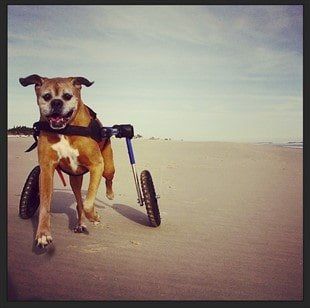
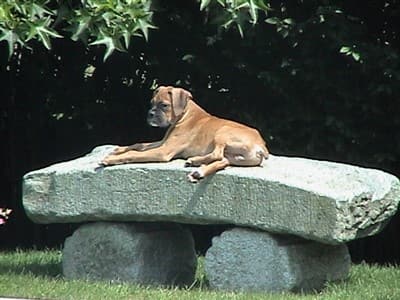
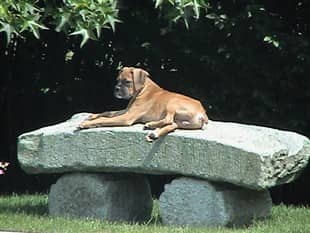
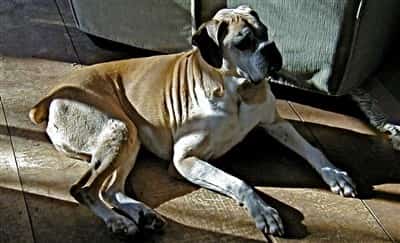

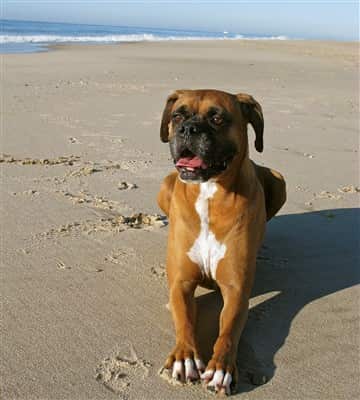
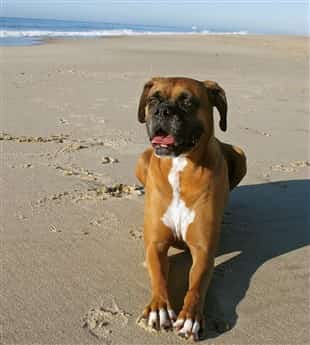
-min-390x369-1920w.jpg)


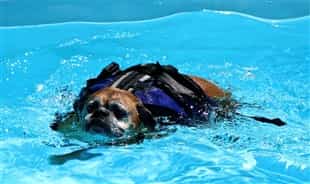
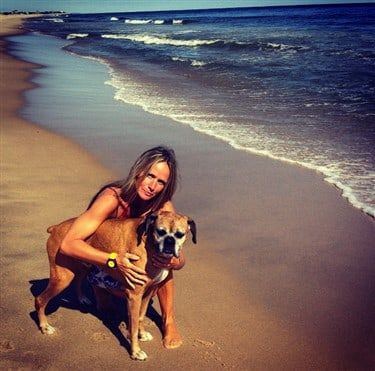
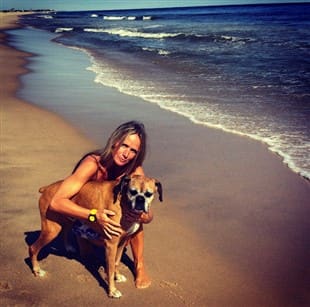
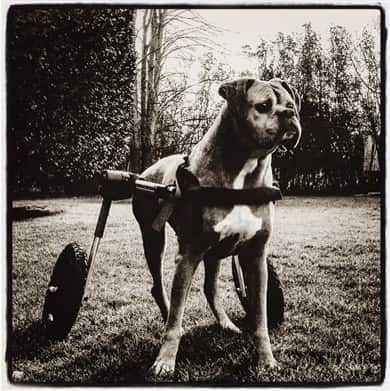
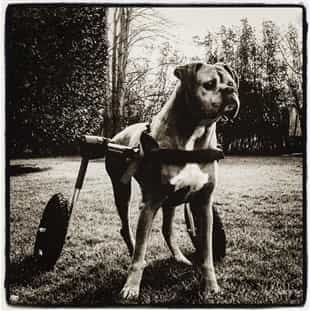
-min-374x390-1920w.jpg)
-min-310x324-1920w.jpg)
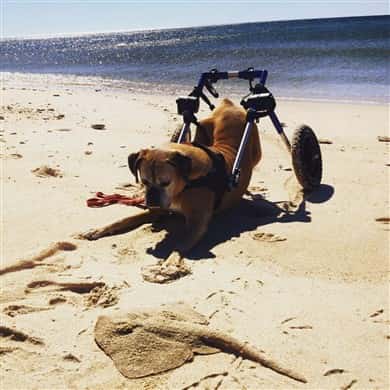
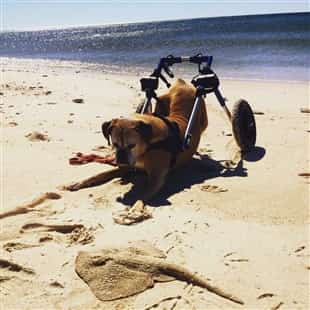
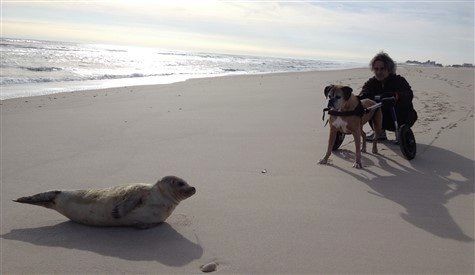
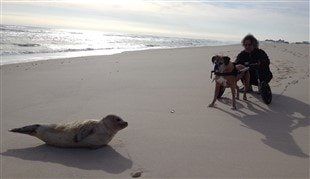
-min-475x305-1920w.jpg)
-min-310x199-1920w.jpg)